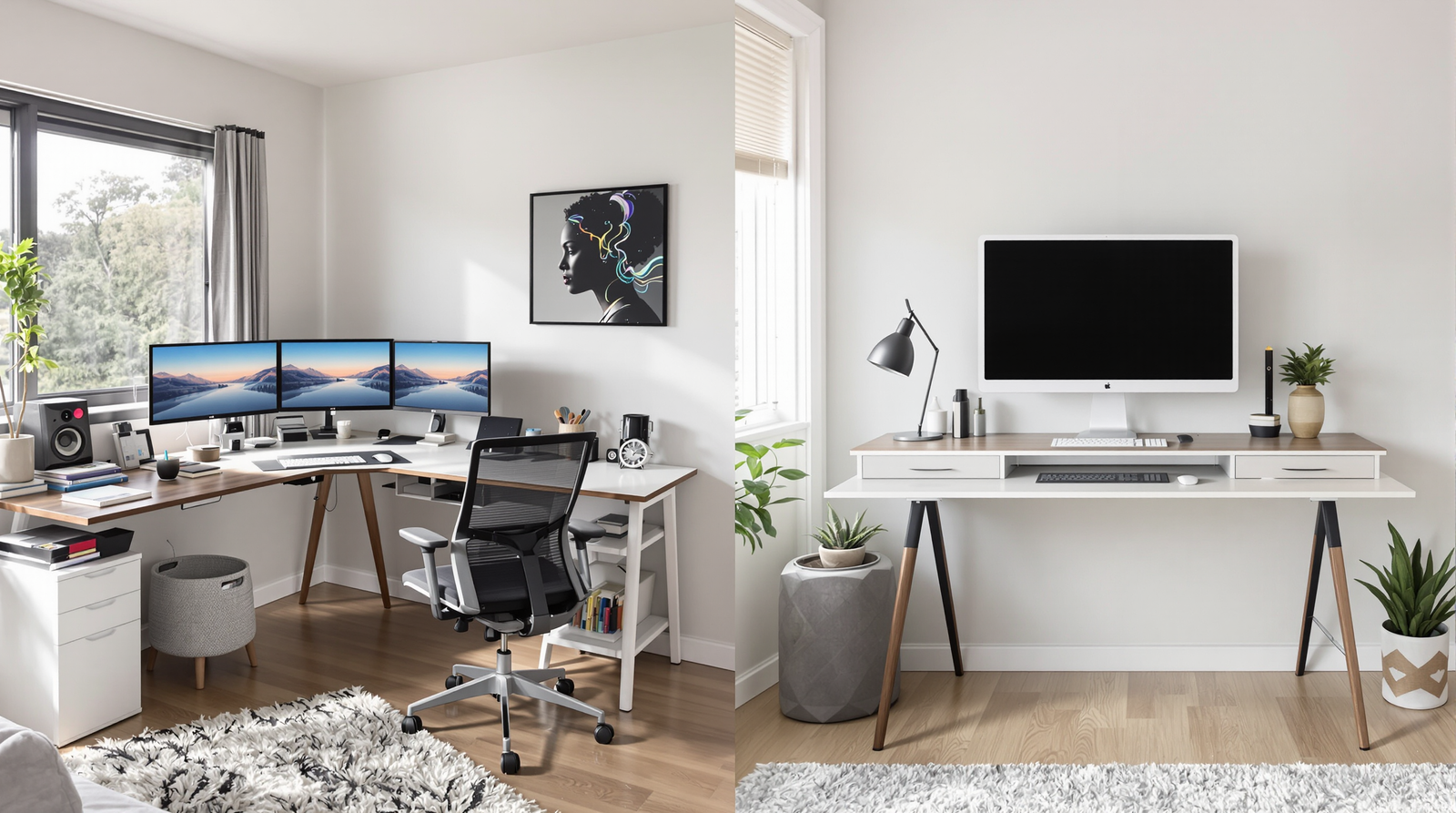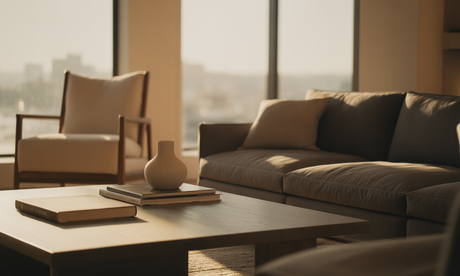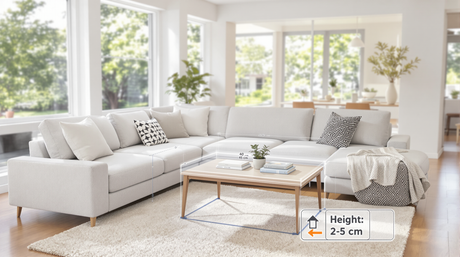Choosing the right desk for your home office is a big decision. The desk you pick will affect how you work, how comfortable you feel, and how your space looks. Two popular options are L-shaped desks and straight desks. But which one is better for your needs? This guide will help you decide by looking at the pros and cons of each desk type.
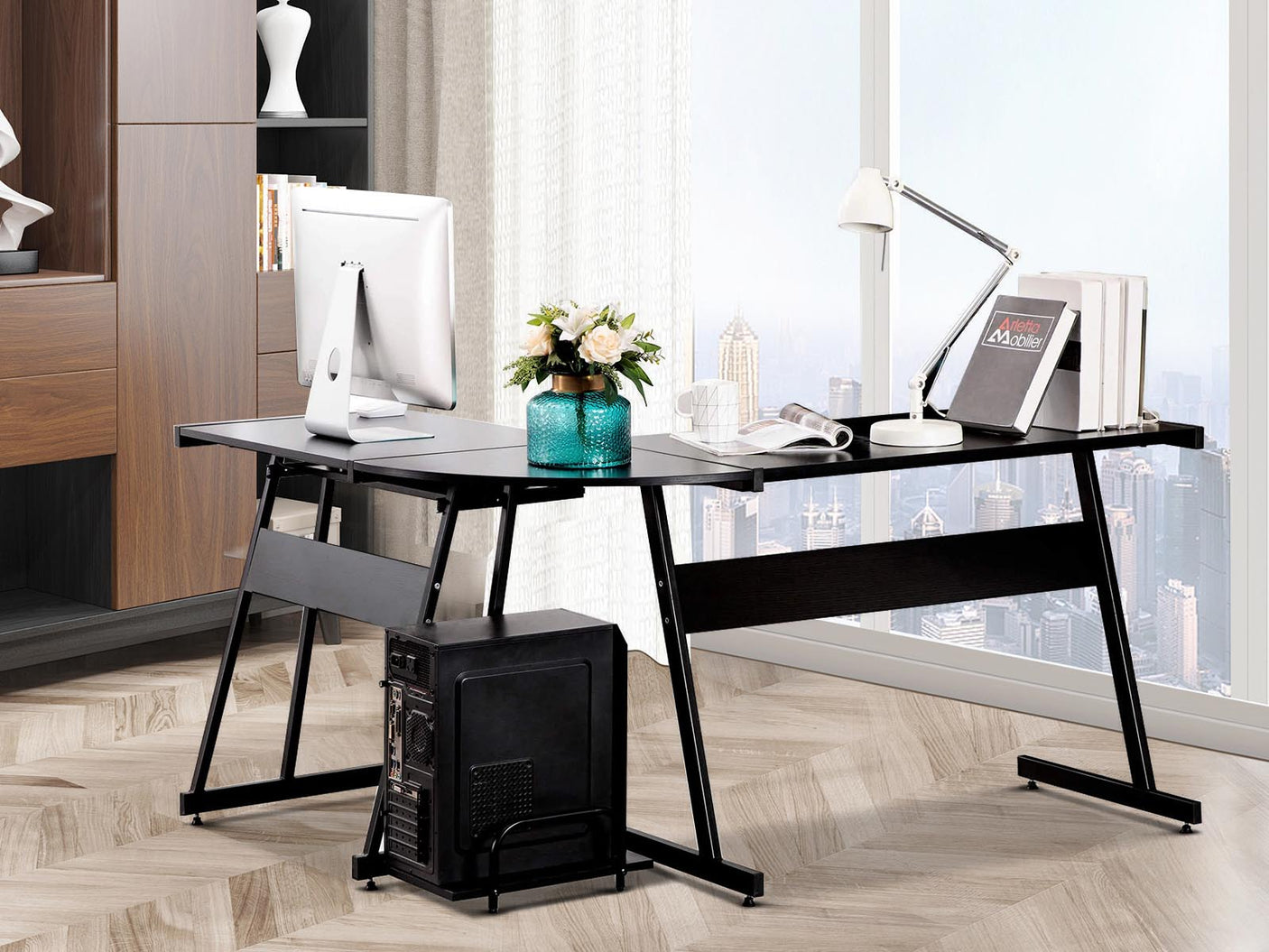
What Are L-Shaped and Straight Desks?
Before we compare them, let's understand what these desks are:
Straight Desks are just what they sound like - rectangular desks with a flat, straight surface. They have a simple shape and fit against a wall or in the middle of a room.
L-Shaped Desks have two parts that form an L shape. One part extends to the side, creating a corner workspace and more surface area.
Space Considerations: Which Fits Your Room Better?
The size and shape of your home office will influence which desk works best.
Space Needed for L-Shaped Desks
L-shaped desks need a corner spot or enough space for their extended shape. They take up more room than straight desks but use corner space that might otherwise be wasted.
These desks work well in medium to large rooms where you can fit the longer sides against two walls. If your home office is small, an L-shaped desk might make the room feel cramped.
Space Needed for Straight Desks
Straight desks are more flexible with placement. You can put them:
- Against a wall
- In the middle of a room
- Under a window
- In tight spaces or alcoves
If you have a small home office or need to fit your desk in a bedroom or living area, a straight desk often works better. They take up less space overall and can fit in places where an L-shaped desk wouldn't work.
Work Style: How Do You Use Your Desk?
Your working habits should guide your desk choice.
L-Shaped Desks for Multi-Taskers
L-shaped desks shine when you need to work on multiple things at once. The extra surface lets you set up different work zones:
- Main work area with computer
- Side area for paperwork or writing
- Space for reference materials
- Room for extra monitors
This setup is ideal if you:
- Use multiple screens
- Need to spread out papers
- Switch between computer work and other tasks
- Like to keep reference materials within reach
Many people find that L-shaped desks help them stay organised by giving each task its own space.
Straight Desks for Focused Work
Straight desks support a more focused workflow. With less space to spread out, they encourage keeping only essential items on your desk. This can help if you:
- Get distracted by clutter
- Focus mainly on computer work
- Have a simple workflow without many materials
- Prefer a minimalist approach
Straight desks also work well with monitor arms, which can free up desk space by lifting your screen off the surface.
Ergonomics: Which is Better for Your Body?
Both desk types can be ergonomic, but they offer different benefits.
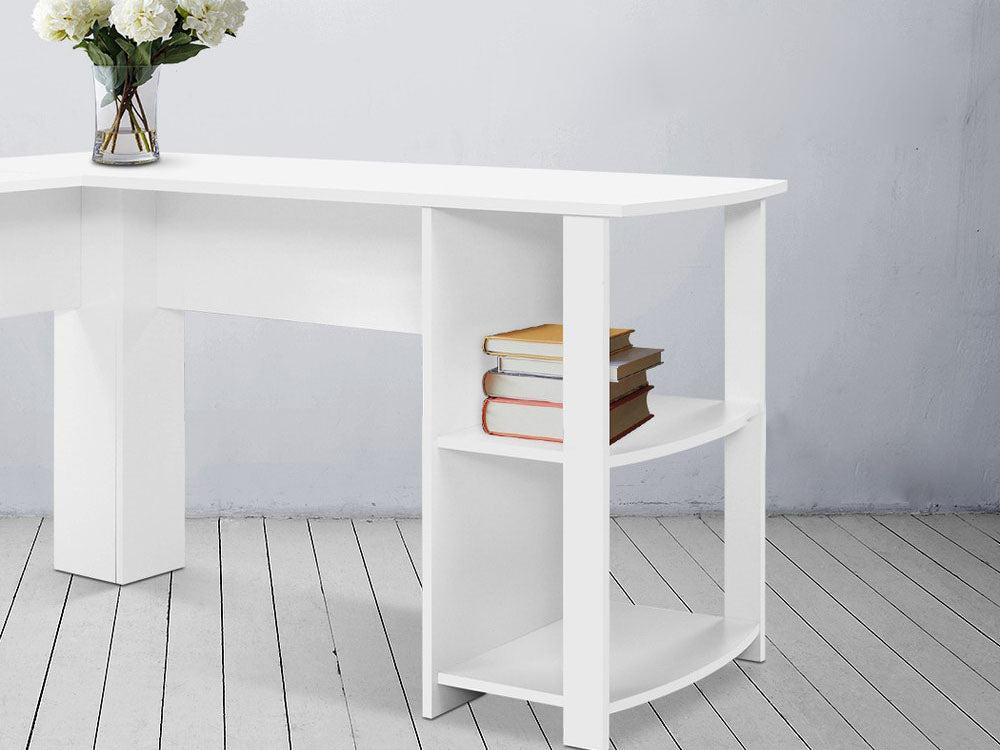
L-Shaped Desk Ergonomics
The main ergonomic advantage of L-shaped desks is the ability to position items within easy reach. You can:
- Place your most-used items in the corner for easy access
- Arrange your workspace to reduce reaching and twisting
- Create distinct zones for different activities
- Switch positions throughout the day by moving between the two sides
Many people find that L-shaped desks let them create a workflow that reduces strain on their bodies.
Straight Desk Ergonomics
Straight desks have their own ergonomic strengths:
- Simpler to set up ergonomically since there's one main work zone
- Easier to place at the right height and distance from your chair
- Works well with ergonomic accessories like keyboard trays and monitor arms
- Often takes up less room, allowing space for an ergonomic chair to move freely
The key to good ergonomics with any desk is proper setup - your screen at eye level, keyboard at elbow height, and feet flat on the floor.
Storage Solutions: Which Offers Better Organisation?
Having enough storage can make or break your home office setup.
Storage with L-Shaped Desks
L-shaped desks often come with more built-in storage options:
- Corner units that maximise otherwise wasted space
- Multiple drawers on both extensions of the desk
- Shelving units that fit above one or both sides
- More surface area for organisers and desktop storage
The extra space means you can keep more items within reach without cluttering your main work area.
Storage with Straight Desks
Straight desks typically have fewer built-in storage options, but they can still work well with:
- Under-desk drawers or filing cabinets
- Wall-mounted shelving above the desk
- Desk organisers that make the most of vertical space
- Freestanding storage units placed nearby
While you might have less built-in storage, the simpler design can encourage better organisation and less clutter.
Collaboration and Meetings: Which Works Better with Others?
If you often have people join you in your home office, this affects your desk choice.
Meetings at L-Shaped Desks
L-shaped desks can be good for small meetings:
- The extended arm creates a natural place for someone to sit beside you
- There's more surface area to share materials
- You can create a distinct "meeting side" of your desk
However, the corner design can sometimes create a barrier between you and others in the room.
Meetings at Straight Desks
Straight desks often work better for collaboration:
- People can sit across from you more easily
- The simple shape feels more open and accessible
- It's easier to rearrange the space for meetings
If you regularly have in-person meetings, a straight desk with a guest chair might be more welcoming.
Style and Appearance: Which Looks Better?
Your desk is a key piece of furniture that affects how your whole space looks.
The Look of L-Shaped Desks
L-shaped desks make a bold statement in a room:
- They create a defined workspace that feels professional
- The larger size makes them a focal point
- They can help divide a multipurpose room into separate areas
- They often look more like traditional office furniture
These desks work well if you want your home office to feel like a dedicated professional space.
The Look of Straight Desks
Straight desks often have a lighter, more versatile appearance:
- They blend into rooms more easily
- Many designs work as both office and home furniture
- They're available in more style options, from minimal to ornate
- They don't dominate a room as much
If your home office is in a shared space or you prefer a less office-like feel, straight desks usually look better.
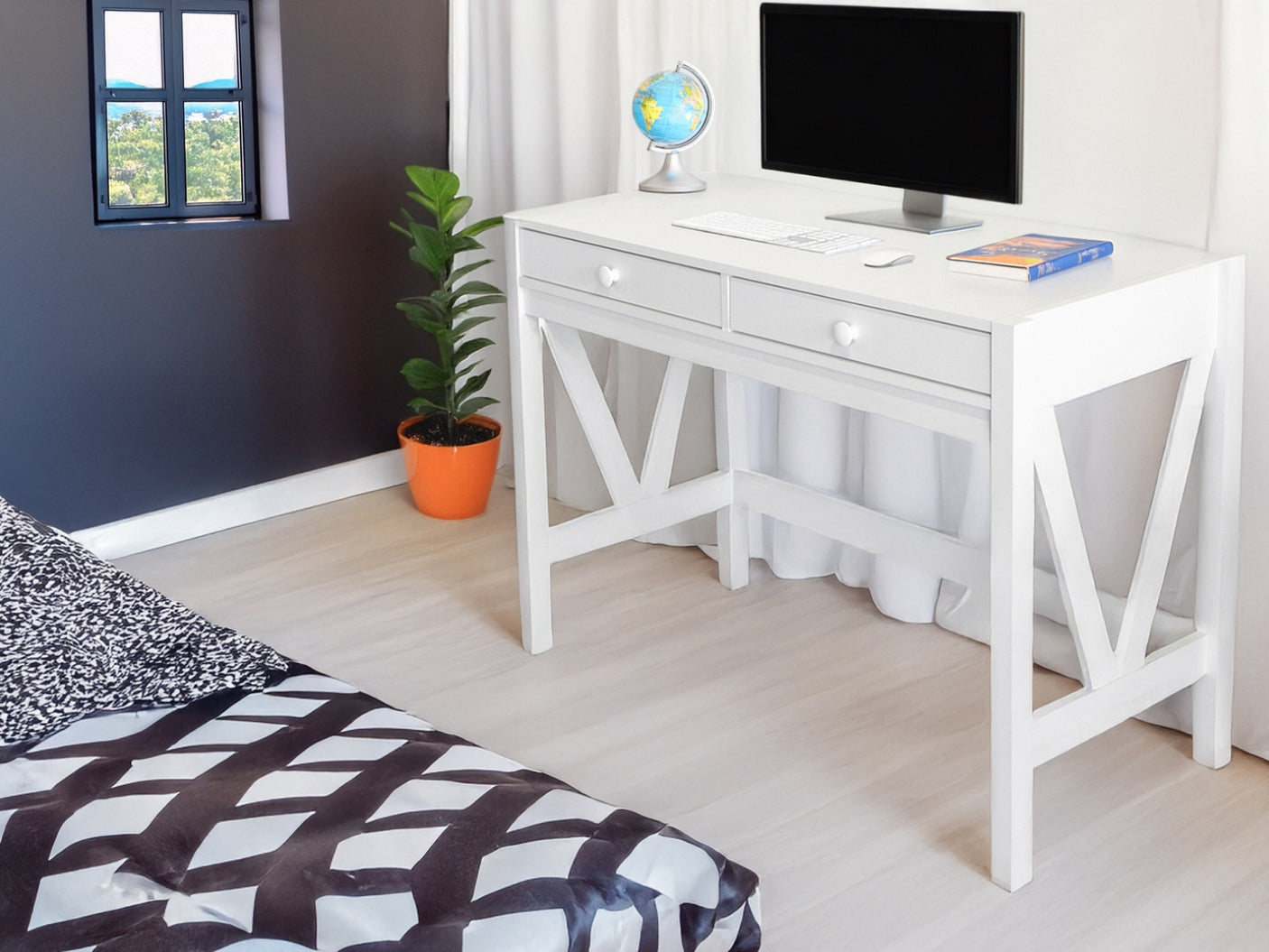
Cost Comparison: Which Gives Better Value?
Budget is often a key factor when choosing office furniture.
L-Shaped Desk Pricing
L-shaped desks typically cost more than straight desks of similar quality because:
- They use more materials
- They're more complex to build
- They often include more features
- Shipping and delivery costs more due to size
Entry-level L-shaped desks start around $300-400, with high-quality options going up to $1,500 or more.
Straight Desk Pricing
Straight desks generally offer more options at lower price points:
- Simple models start under $200
- Mid-range quality options are available from $250-500
- High-end designs range from $600-1,200
For the same budget, you can often get a higher-quality straight desk than an L-shaped desk.
Adjustability: Which Adapts Better to Your Needs?
As work habits change, you might need your desk to adapt too.
Adjustability in L-Shaped Desks
L-shaped desks have some adjustability challenges:
- Their size makes them harder to move or rearrange
- Height-adjustable L-shaped desks are available but expensive
- Fixed height models can't easily be modified later
- Their shape limits how you can reposition them in a room
However, some modern L-shaped desks come in modular designs that let you change the configuration or separate the pieces.
Adjustability in Straight Desks
Straight desks usually offer more flexibility:
- Easier to move when you want to change your room layout
- More affordable height-adjustable options available
- Simpler to add ergonomic accessories like keyboard trays
- Can work in different rooms if your needs change
If you think your work setup might change in the future, a straight desk often adapts better.
Best of Both Worlds: Modular Options
Can't decide? Some desk systems offer the best of both approaches:
- Modular desk systems that can be arranged in L-shapes or straight configurations
- Straight desks with optional return pieces that can be added or removed
- Corner desks that take up less space than full L-shaped desks
- Adjustable L-shaped desks that can be reconfigured as needed
These flexible options let you adapt your workspace as your needs change.
Making Your Decision: A Simple Checklist
To help you choose, answer these questions:
Choose an L-shaped desk if:
- You have a larger room with available corner space
- You regularly use multiple screens or spread out papers
- You need distinct zones for different types of work
- You want maximum desktop space and storage
- You prefer a defined, professional-looking workspace
Choose a straight desk if:
- You have limited space or a small office
- You primarily use a single computer for work
- You prefer a minimalist, uncluttered workspace
- You want more flexibility to rearrange your space
- You need to fit your desk in a multipurpose room
- You're working with a tighter budget
Conclusion: Finding Your Perfect Desk at TSB Living
Both L-shaped and straight desks can work well for a home office - the right choice depends on your space, work style, and personal preferences.
At TSB Living, we offer a range of both L-shaped and straight desks to suit different needs and budgets. Our collection includes options for small spaces, adjustable height models, and desks with built-in storage.
Whether you need a compact straight desk for a small apartment or a spacious L-shaped workspace for a dedicated home office, we have options to help you create a productive and comfortable work environment.
Looking for more home office advice? Check out our other guides:

